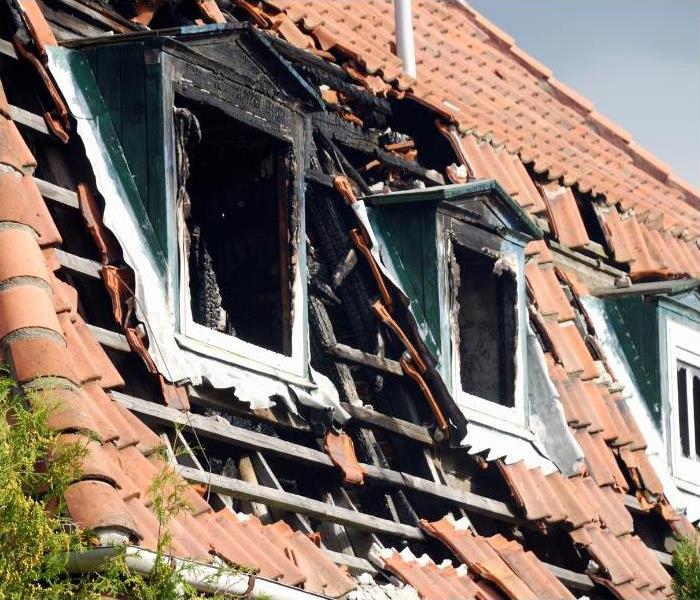Salvageable or Non-Salvageable: Best Practices for Fire Damage Restoration
6/28/2023 (Permalink)
The damage can be devastating when a fire strikes your home or business. Smoke, heat, and water combine to leave behind charred surfaces and possessions that may seem destroyed beyond repair. But with the proper knowledge and expertise, much of the destruction caused by fire can be repaired and restored. We will discuss best practices for fire damage restoration and how to determine what materials are salvageable and non-salvageable. We will cover the different categories of fire damage, how they can affect your property, safety considerations when dealing with fires, and steps to properly mitigate and repair any damage. With these tips in mind, you can begin to reclaim your space after a fire.
Understanding Fire Damage and its Effects
The most common causes of fires are electrical malfunctions, unattended cooking, misuse of matches and lighters, smoking materials, space heaters, and arson. Other sources, such as candles, wood stoves, lightning strikes, automotive accidents, chemical reactions, and gas leaks from appliances or heating systems, can also spark a blaze. These causes come with several safety considerations when addressing a fire-damaged property. For example, locating hazardous materials like asbestos or lead paint or identifying live power lines are essential for the proper restoration of fire damage.
Understanding the damage caused by a fire is important for determining what is salvageable and non-salvageable to begin rebuilding your home or business. Fire damage can include structural damage as well as smoke and soot damage which will affect many items in your home or business, including furniture, fabrics and upholstery, walls, floors, ceilings, carpeting, books, and documents.
In addition to primary fire damage, other secondary damages are caused by water damage from extinguishing efforts, mold, and other environmental hazards. These issues should be taken into account when assessing the extent of the damage.
By familiarizing yourself with best practices for fire damage restoration, you can begin the repairs to your home after a fire disaster. With this knowledge of what safety precautions to take when dealing with fires, identifying hazardous materials, assessing damages, and determining what is salvageable and non-salvageable, hiring a fire damage restoration service is essential to begin restoring your property following a fire event.
Identifying Salvageable and Non-Salvageable Materials
Identifying salvageable and non-salvageable materials after a fire is an important step in the fire damage restoration process. It helps individuals understand the damage's extent and determine the repair and restoration budget. Fire-resistant materials, such as metals, concrete, brick, tile, marble, granite, and treated wood products, are a great place to start when assessing the damage. Additionally, it is important to differentiate between different categories of fire damage, such as heat exposure, smoke residue, chemical residue, and water damage.
Assessing the Extent of Fire Damage
After a fire, it is crucial to assess the extent of the damage to create an accurate plan for mitigation and repair. Different types of fire damage can occur, such as structural damage, wiring, insulation, plumbing damage, and contamination from smoke and soot. To assess the extent of fire damage, it is essential to check for structural integrity first. This involves checking if walls are still standing straight or if there are any signs of buckling or warping. It also involves looking for visible signs of water damage caused by fighting the fire with powerful water hoses.
In addition to assessing structural integrity, it is necessary to identify where smoke and soot have spread throughout the house or structure. Smoke and soot particles can quickly travel through vents and ducts, reaching even distant rooms in a home or building. Particular attention should be paid to testing air quality throughout the affected area to identify possible sources of contamination that could pose health risks down the line.
Finally, it is essential to take into account potential issues with wiring due to heat exposure during a fire. Electrical wires can suffer from heat shrinkage, which may become brittle over time and cause shorts when they come into contact with other metal objects. Checking each wire individually can be time-consuming but necessary for proper restoration work to be performed afterward and to ensure a safe environment.
By assessing the extent of fire damage using these techniques, individuals can learn what steps need to be taken for proper mitigation and repair after a devastating event such as a fire occurs on their property.
Fire Damage Restoration Process and Best Practices
Fire damage restoration is an intricate process requiring precise attention to safety, damage assessment, mitigation, and repair. Prioritizing safety first is essential; this includes disconnecting all utilities and inspecting for hazardous materials. It is also important to document the extent of the damage with photos. The next step involves mitigation measures such as removing water from affected areas, drying areas, cleaning surfaces, repairing damaged items, replacing non-salvageable items, disposing of hazardous waste safely, and monitoring air quality levels.
SERVPRO® of Wilson County, will develop a detailed plan regarding your property's restoration. It is vital to ensure that all steps leading up to completion—including assessment of damages; removal of debris; mitigation (cleaning); drying; repair/restoration; disposal/recycling—are appropriately completed by us.
By following these tips about the fire damage restoration process, individuals can get back on track after experiencing devastating losses due to fires while finding reliable professionals who meet their needs regarding experience and exceptional quality. Call SERVPRO of Wilson County today to schedule a consultation with our fire damage restoration team.





 24/7 Emergency Service
24/7 Emergency Service
